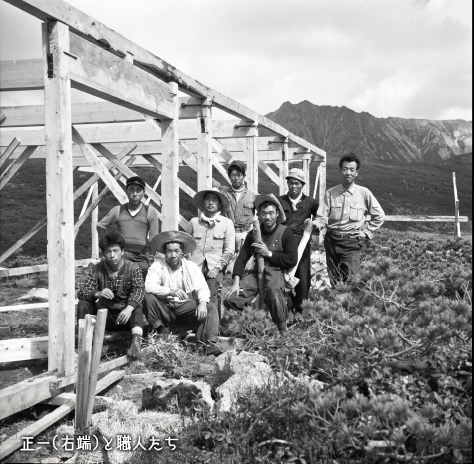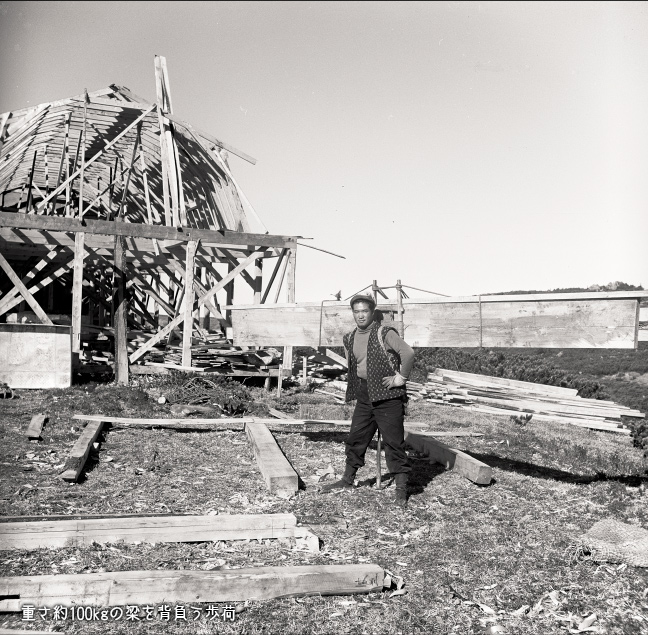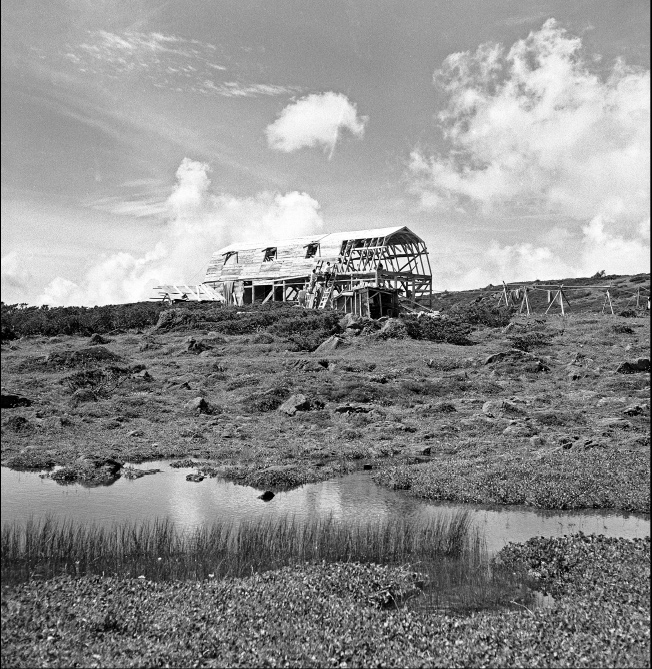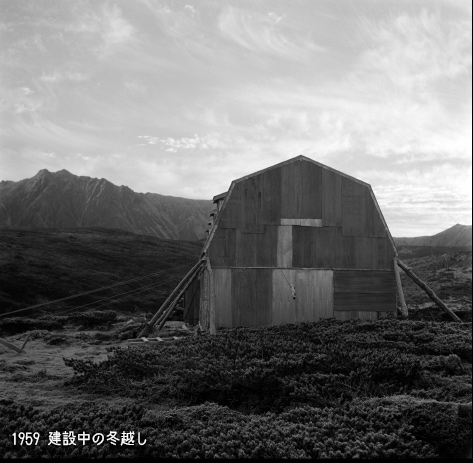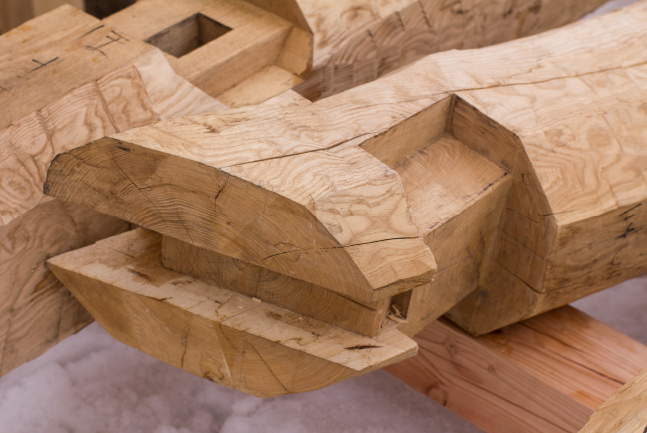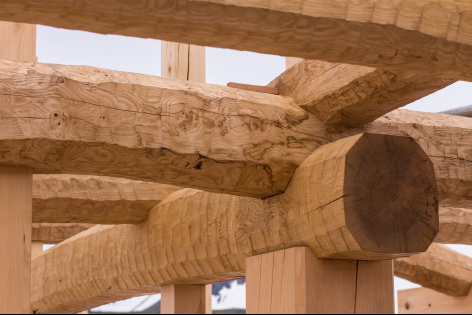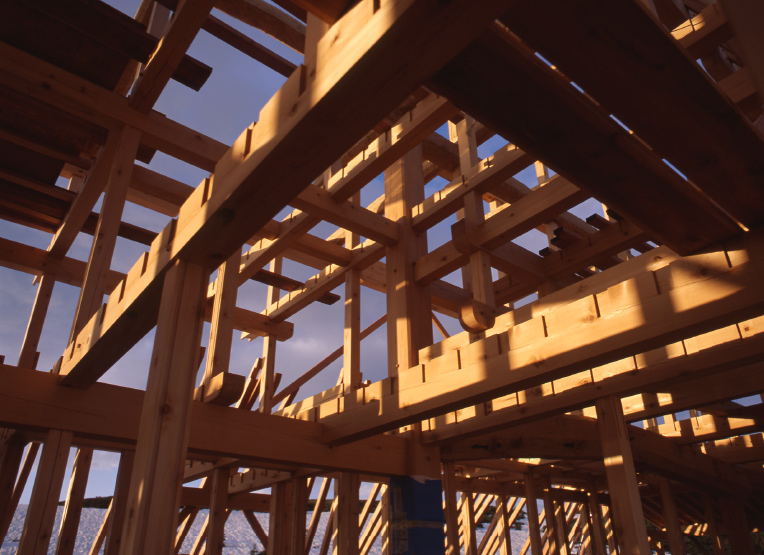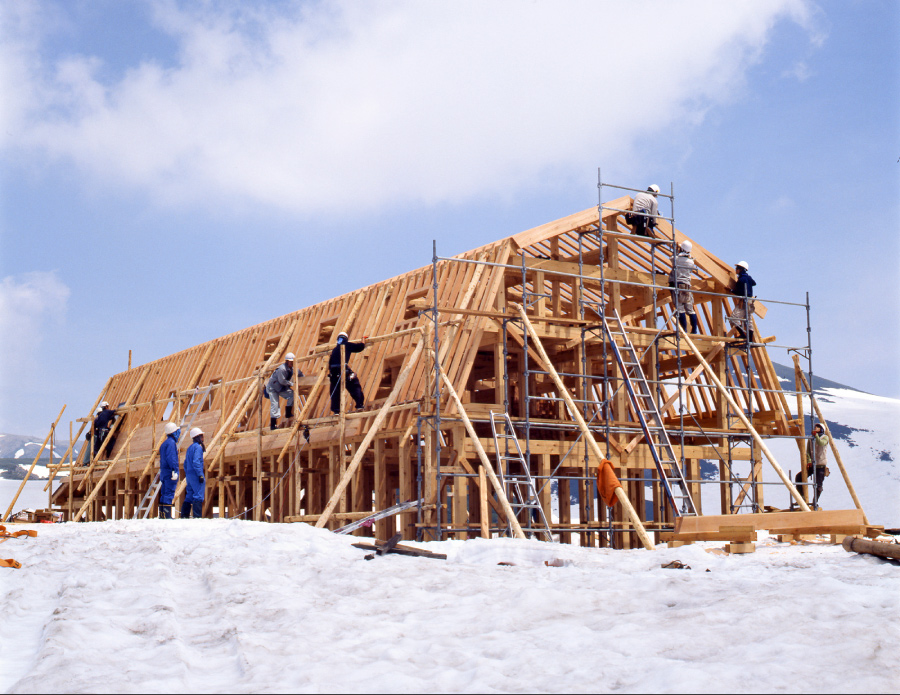Features
雲ノ平山荘の歴史
As being called the “Last Undiscovered Region”, one cannot virtually find any record before Showa Era (1926-1989) pertaining to Kumo-no-daira (kumo means plain and daira means plain) when researching its history. The origin of its name is unknown but possibly means “When overseeing the place from surrounding ridgelines, sometime, it literally looks like plain of clouds as clouds cover gently-sloping topography of Kumonodaira” or “When snow melts, the surface of the ground takes on the shape of a spider (spider also means kumo in Japanese)”.Before the age of modern mountaineering, the region of the Kurobe Riverheads (including Kumonodaira) had been managed as forest owned by Kaga Han (one of feudal clans in Edo Era (1603-1867)). Since this area borders the Kaga Han and the Matsumoto Han on Shinshu side, a post called “Okuyama Mawari (Patrol for Deep Mountain)” was created, and once a year, a patrol in conjunction with local woodcutter(s) was undertaken. For forest resource management, for the forest resource management, Kumonodaira, however, was not subject to this patrol.
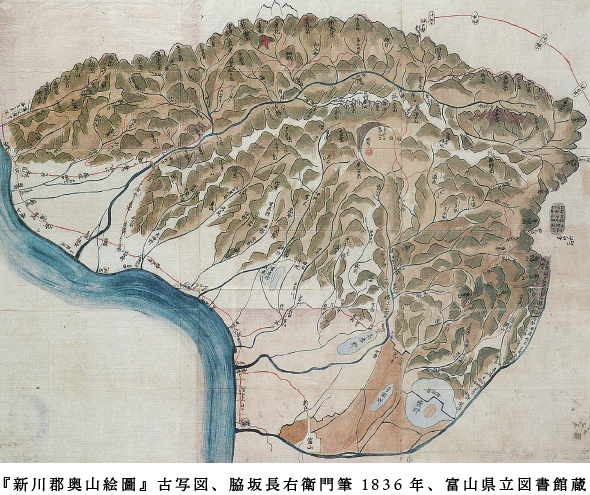
Shoichi Ito, founder of the Kumonodaira Mountain Hut, first called attention to the Kurobe Riverheads, describing it as unique and beautiful. Shoichi’s first career as Aeronautic Engineer abruptly ended in the aftermath of World War II. After learning from an acquaintance that Mitsumata-Goya Hut’s owner has been killed in the war, Shoichi bought management rights. He first encountered with Kumonodaira while exploring regions adjacent to his mountain hut with the aim of pioneering trail routes in the for Kurobe Riverheads region, the last unexplored territory in Japan North Alps (this episode is described in details in “Kurobe no Sanzoku (Bandits of Kurobe)” written by him).
In Shoichi’s eyes, beautiful scenery, such as the small marshland ponds scattered around the meadow, exquisitely placed stones, Haimatsu (the dwarf pines), and alpine flowers blooming in profusion, appeared as if Nature’s Gardner has created a paradise. Kumpnodaira had “Wabi Sabi” that Japanese special feeling of place that invokes deep feelings. The small hill where the lodge is located is the focus of the area’s energy and became a welcoming place for humans venturing into the wilderness. We continue to honor Shoichi’s legacy here at Kumonodaira.
For eyes of Shoichi, beautiful scenery such as small marshland ponds scattered around grassy plain, exquisitely placed volcanic rocks and Haimatsu (dwarf pines) and alpine flora blooming in profusion that was as if a gardener methodologically created might have been one sort of utopia.
He decided to build the mountain hut there. At that moment, new alpine culture, that was not just the use of resources nor exploring peaks and ravines, sprouted in Kurobe Riverheads, the remotest region in Japan North Alps.
Chronological table
-
1905Usui Kojima and others established the first mountaineering group in Japan (later named the “Japan Alpine Club”).
-
1906Teiitsu Matsuzawa built the Hakuba Sanso, the first mountain hut in Japan open for business.
-
1921Chihiro Akanuma built the Tsubame-no-Koya Hut (current Enzanso).
First successful climb of East Ridge of the Eiger by Aritsune Maki. The Age of Alpinism had arrived in Japan. -
1922Kisaku Kobayashi built the Sessho-Goya Hut (current Sessho Hutte).
-
1923Shoichi Ito was born in Matsumoto City, Nagano Prefecture.
-
1924Former Kama Tunnel opened using hand rock cutting work.
Fumikazu Kamijo built the Eboshi-Goya Hut.
George Leigh Mallory went missing while climbing Mt. Everest. -
1925Matsujiro Kanmuri, known as “Father of Kurobe”, successfully navigated the Kurobe River Shimonorouka Gorge and discovered Jujikyo Ravine.
Jutaro Imada built the Hodaka-Goya Hut (current Hodakadake Sanso).
Shintaro Momose built the Osawa-Goya Hut. -
1926Misuo Hokari built the Kata-no-Koya Hut (current Yarigatake-Sanso Hut).
-
1930The first issue of “Yama-to-Keikoku”, mountaineering magazine, was published.
-
1933Tetsuichi Kamijo built the Suisho-Goya Hut.
-
1934Chūbu-Sangaku National Park was designated by the national government.
-
1937Vibram Company was established, providing grip soles for shoes, and hiking boots.
-
1939Tokyo Alpine Photographers Club (current Japan Alpine Photographers Association) was established.
-
1943Shoichi Ito joined the Army Aeronautic Technology Research Center after recognition of his design proposal for the aircraft engine which he conceptualized during his school years. During this time, he commuted between his home in Matsumoto, and the research center in Tokyo. Also, at this time, he occasionally visited deserted Kamikochi and befriended with the local people from the area surrounding the mountain huts.
-
1944Shoichi trekked the length of the Uraginza Trail to Kamikochi and visited Mitsumata for the first time.
-
1945With ending of the World War II, the Aeronautic Technology Research Center was closed and Shoichi Ito’s research on the aircraft engines came to an end.
1945
In September, Shoichi Ito bought management rights to Mitsumatarenge-Goya Hut after his friend Hideo Okuhara of the Nishiitoya Inn informed him it was available for purchase.
-
1945Chojiro Uji, renowned guide for the Mt. Tsurugi-dake and Kurobe Gorge, passed away at age 73.
-
1946Shoichi Ito visited the Mitsumatarenge-Goya Hut and met the “Bandits(*)”.
He bought the management rights to the Suisho-Goya Hut.
He embarked on selection of route for developing the Ito-Shindo Trail.
(*) The “Bandits” were basically four huntsmen who made their livelihood in the wilderness of Kurobe Riverheads, and later came to assist Shoichi Ito pioneer the Kurobe Riverheads. They are Fujiya Tooyama (1887-1968), Rinpei Toyama (1901-1974), Zenichiro Onikubo (1914-1996) and Katsurtaro Kurashige (1887-1953). At first, they were misunderstood as outlaws who made the Kurobe Riverheads as their territory until Shoichi Ito cleared it up. -
1947Shoichi Ito started the Mitsumatarenge-Goya Hut business.
After visiting the Kumonodaira for the first time, committed himself to opening the regions to visitors.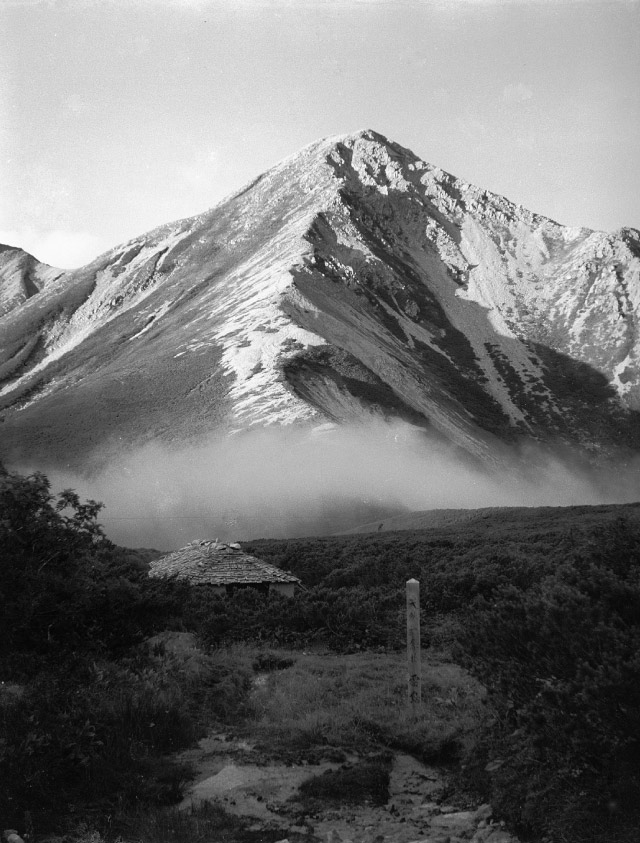
-
1947The first issue of “Gakujin”, a mountaineering magazine, was published.
-
1948Shoichi Ito rebuilt the Mitsumatarenge-Goya Hut with remaining materials from the former Suishogoya-Hut.
Yoshiharu Koyama built the Kitaho-Goya Hut. -
1951The Hobundo Co., Ltd. built the Karasawa Hutte.
-
1952Shoichi Ito, Misuo Hokari, Chihiro Akanuma, Yoshichika Nakamura and others established the first mountain huts union in Japan North Alps.
1953
Shoichi Ito began building the Ito-Shindo Trail.
- Construction began on the temporary bridge at the Dai-San Suspension Bridge location on the Ito-Shindo Trail.
First attempted flight of a cargo shipment
by a Cessna plane in Japan North Alps.
by a Cessna plane in Japan North Alps.
This delivery method was eventually halted in following year after the Cessna plane, that was on covering news on training of the Antarctic Expedition Team, crashed on Mt. Norikura.
-
1953Katsurao Kurashige passed away at age 66.
*refer to “Bandits"
Heiji Saeki built the Kenzanso Hut.
Sir Edmund P. Hillary from the UK and his Sherpa guide Tenzing Norgay became first humans to reach the summit of Mount Everest. -
1956The Ito-Shindo Trail opened and transportation of the building materials for Mitsumata and Kumonodaira huts began using the trail.
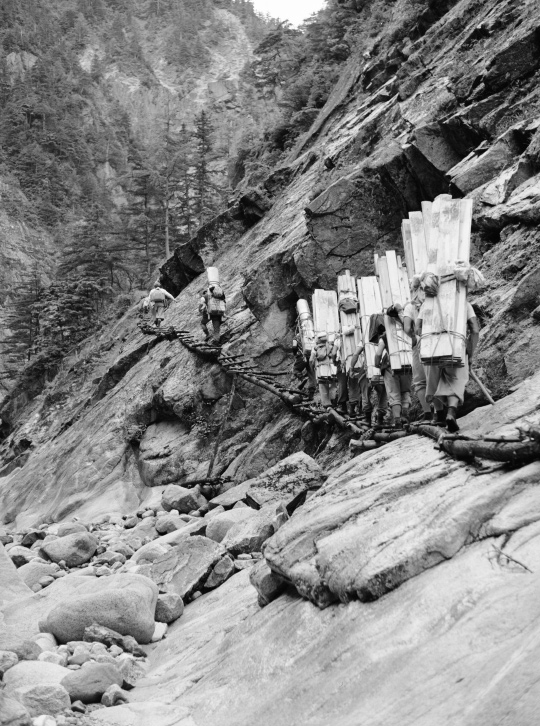
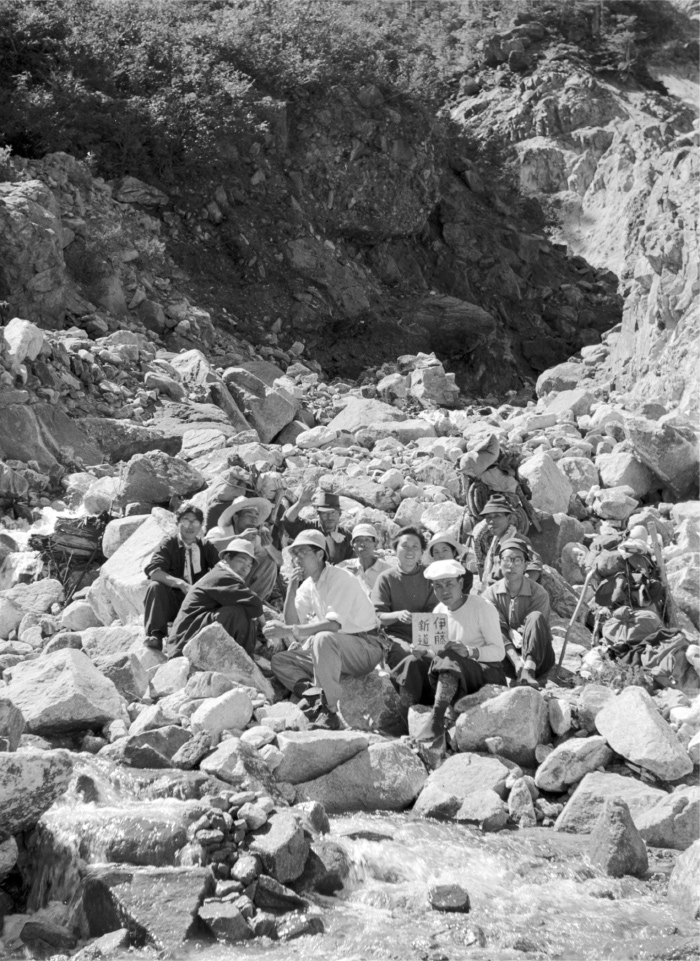
-
1956First ever ascent of Mt. Manaslu by the Japanese Team, and beginning of the first mountaineering boom.
-
1958Increasing interest in trekking after the opening of the Ito-Shindo Trail leads to shortage of lodging, so two additional temporary huts were built adjacent to the existing Mitsumatarenge-Goya Hut.
The Yumata-Sanso Lodge was completed in the same year.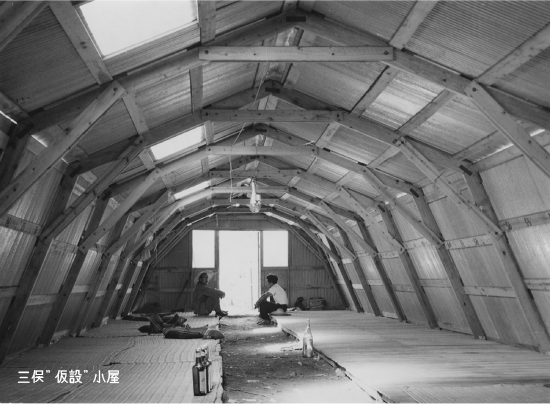
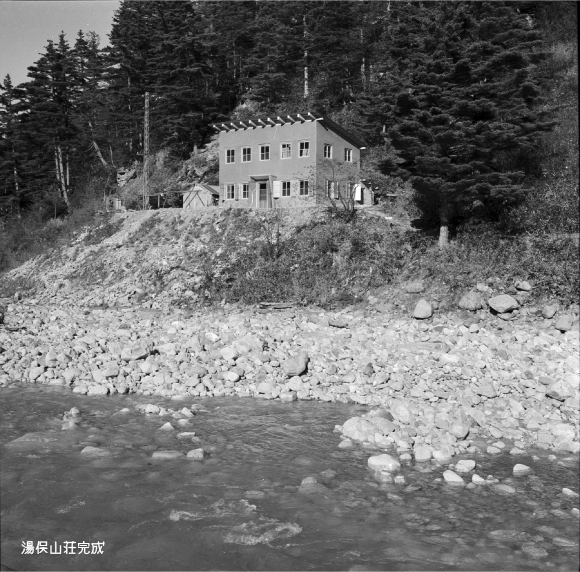
-
1958The Kurobegoro-Goya Hut was built.
Yoshichika Nakamura built the Chogatake Hutte.
The first issue of “ALP”, a mountain literature magazine, was published. -
1959Five suspension bridges for the Ito-Shindo Trail were completed.
The radio telephone station in the Mitsumatarenge-Goya Hut was installed.
Construction of the Kumonodaira Mountain Hut began.
Construction of the Suisho-Goya Hut began, but just prior to completion, the hut was completely demolished by the Isewan Typhoon.
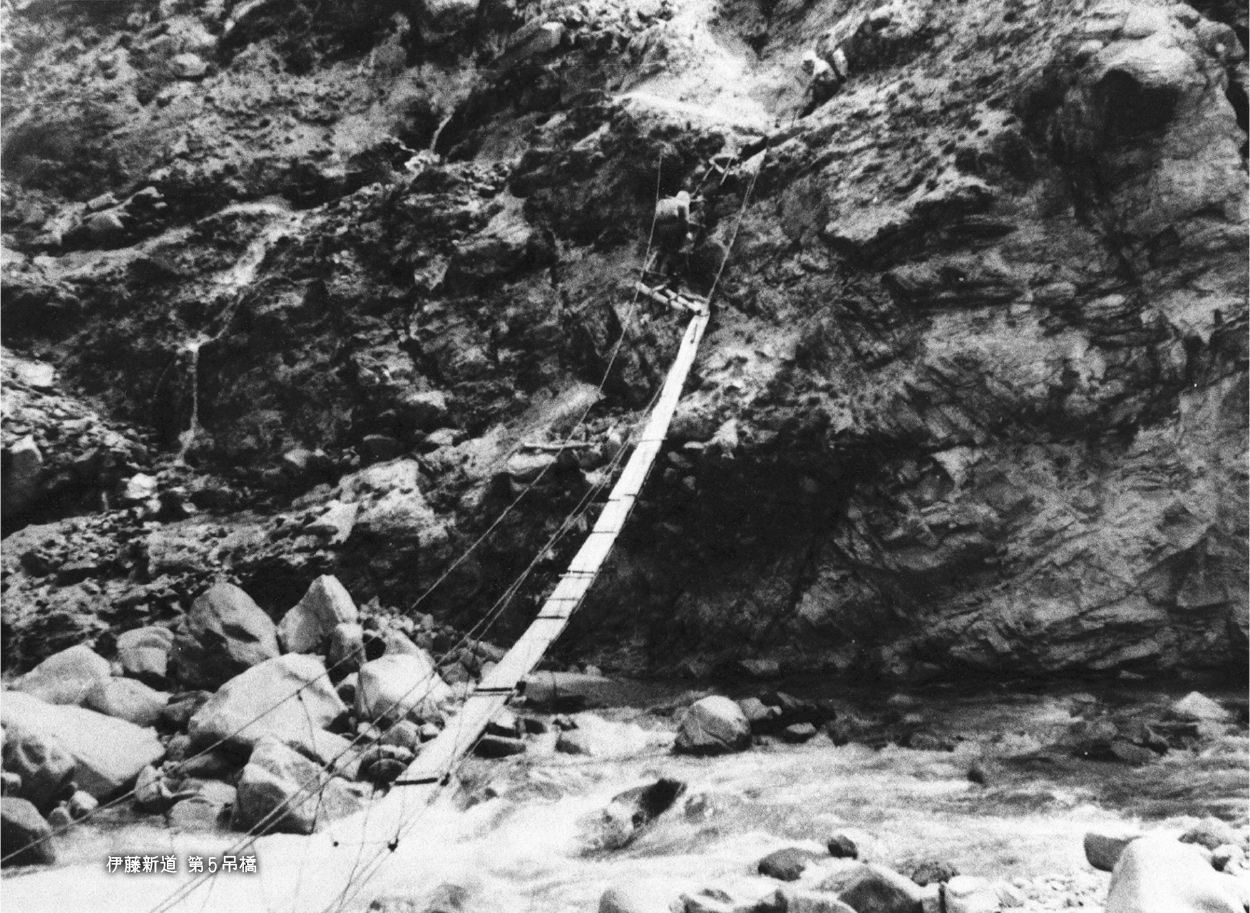

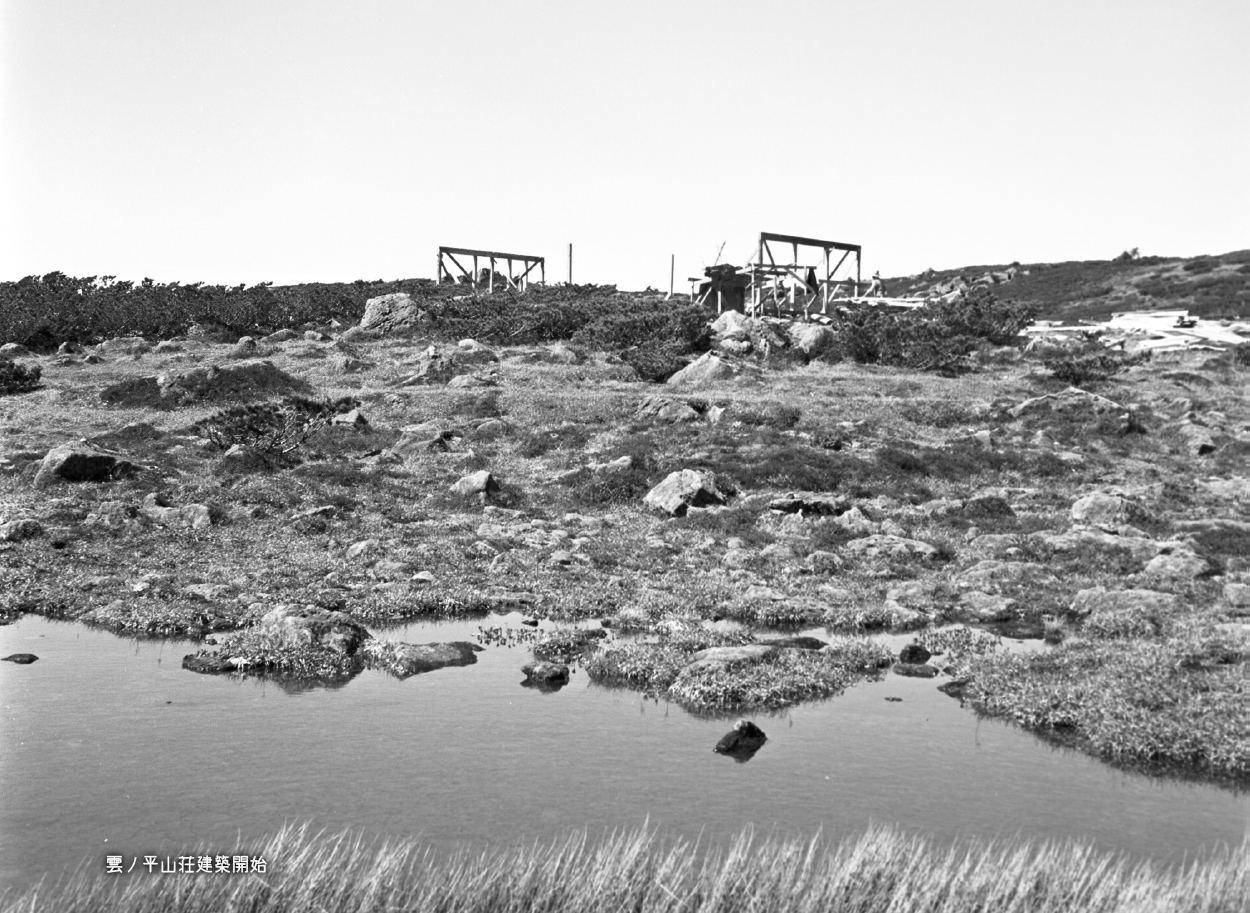
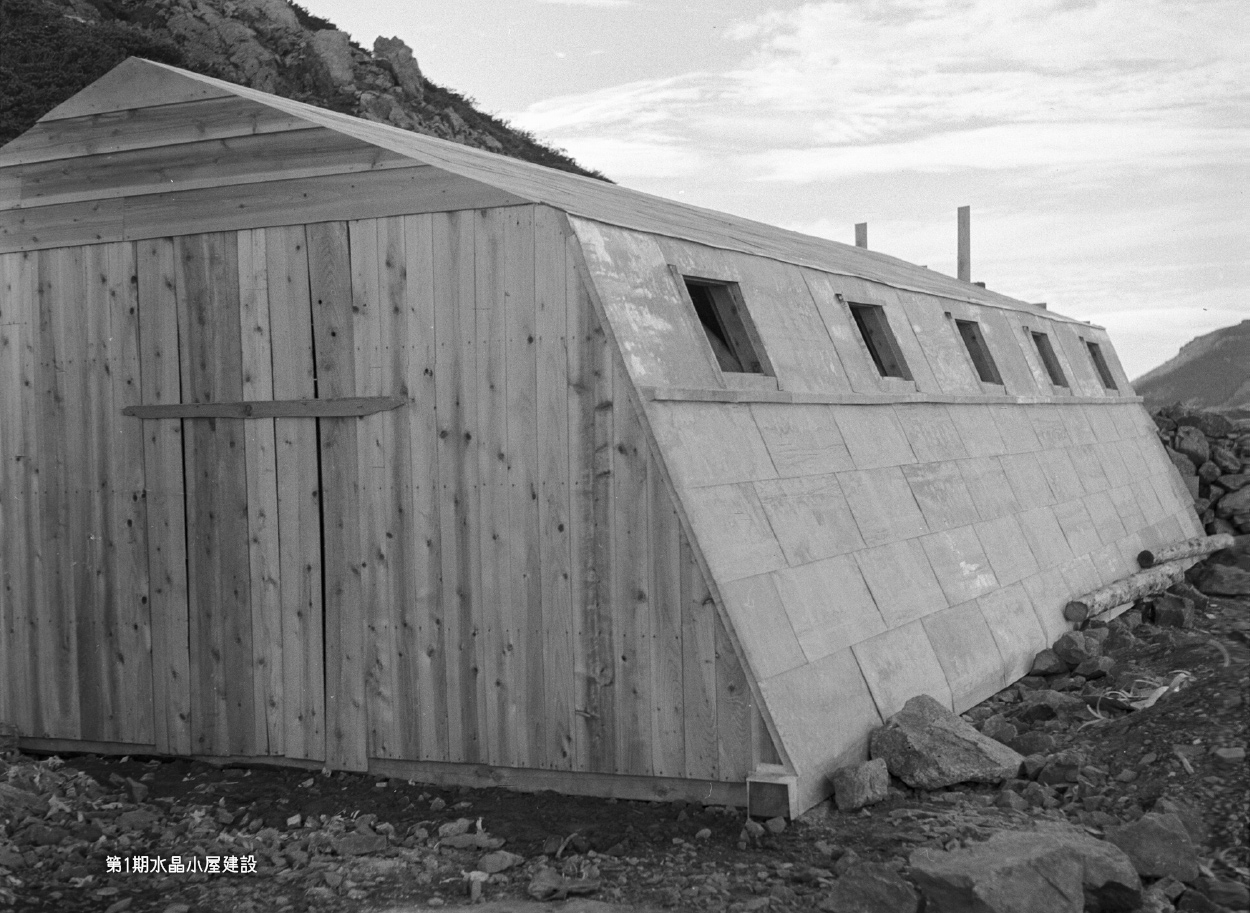

-
1960The Japan Workers’ Alpine Federation was established.
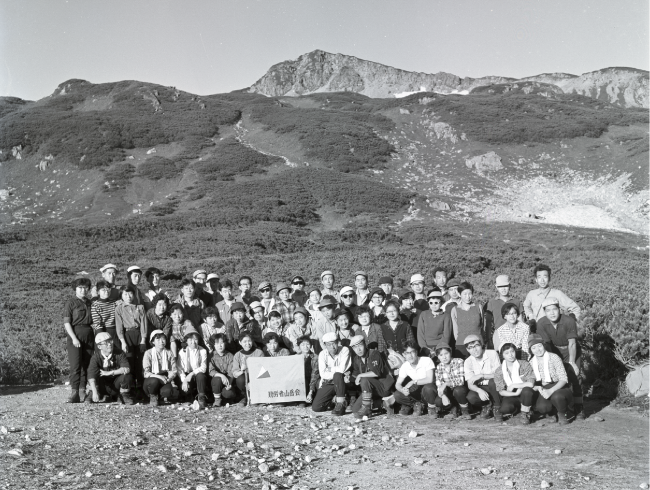
-
1960Completion of the Arimine Dam.
1961
the Kumonodaira Mountain Hut, begun in 1959, was nearly complete.
-
1955Scene of Kumonodaira without the hut
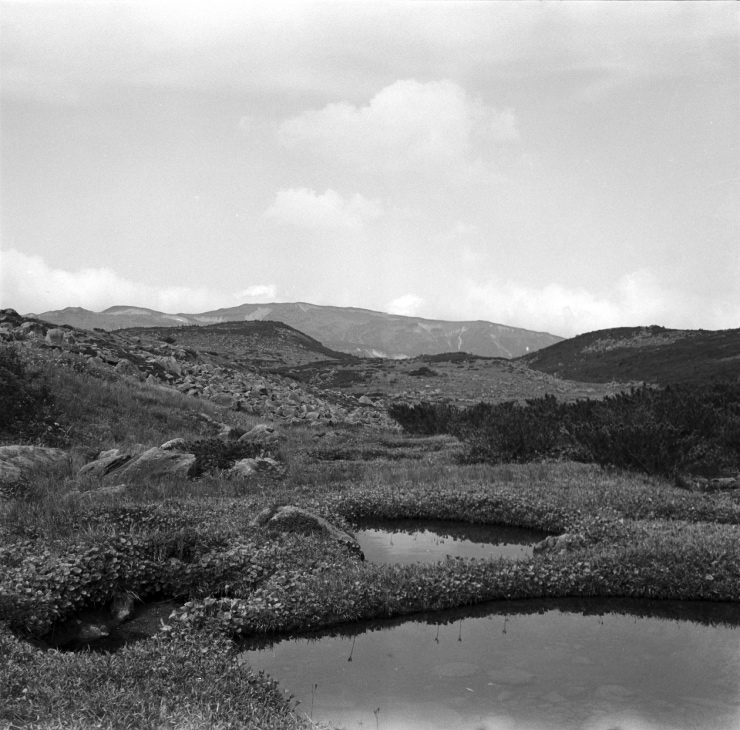
-
1959Construction of the Kumonodaira Mountain Hut begins.
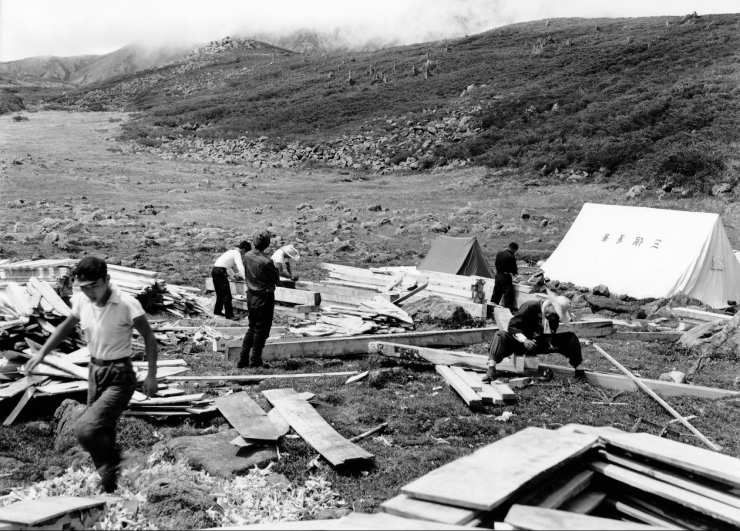
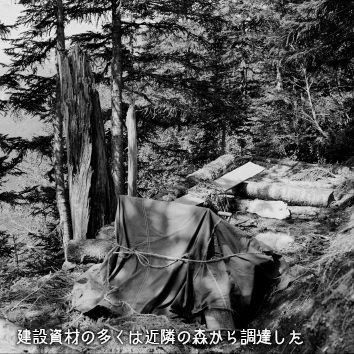
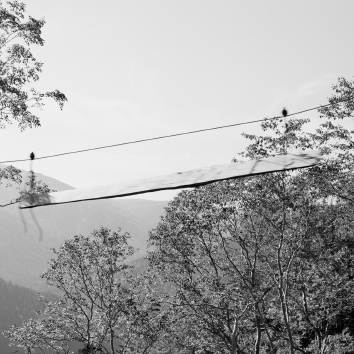
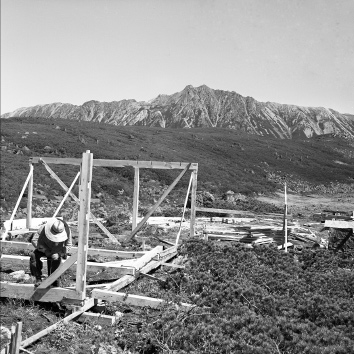
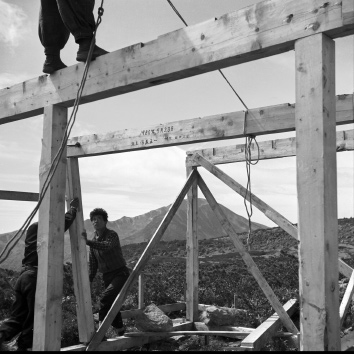
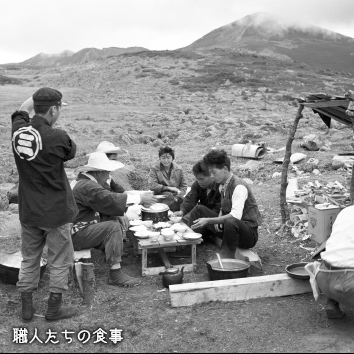
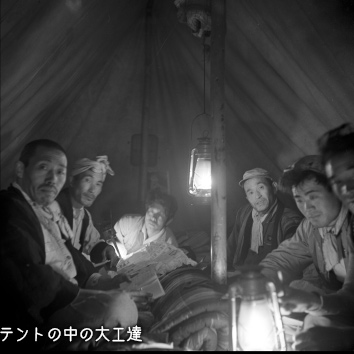
-
1961Construction of the Mitsumata-Sanso was completed.
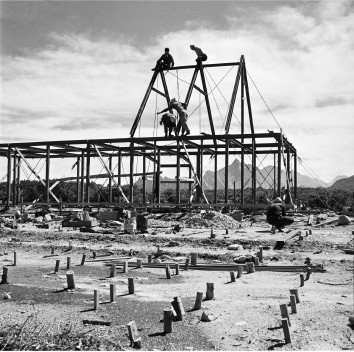

-
1962Efforts to rebuild the Suisho-Goya Hut came to a halt after typhoon damage.

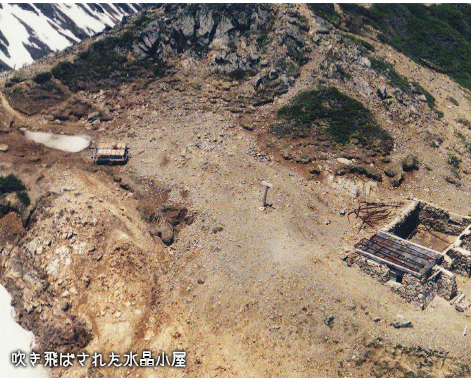
1963
The Kumonodaira Mountain Hut was completed.
-
1963Cargo shipment by helicopter started.
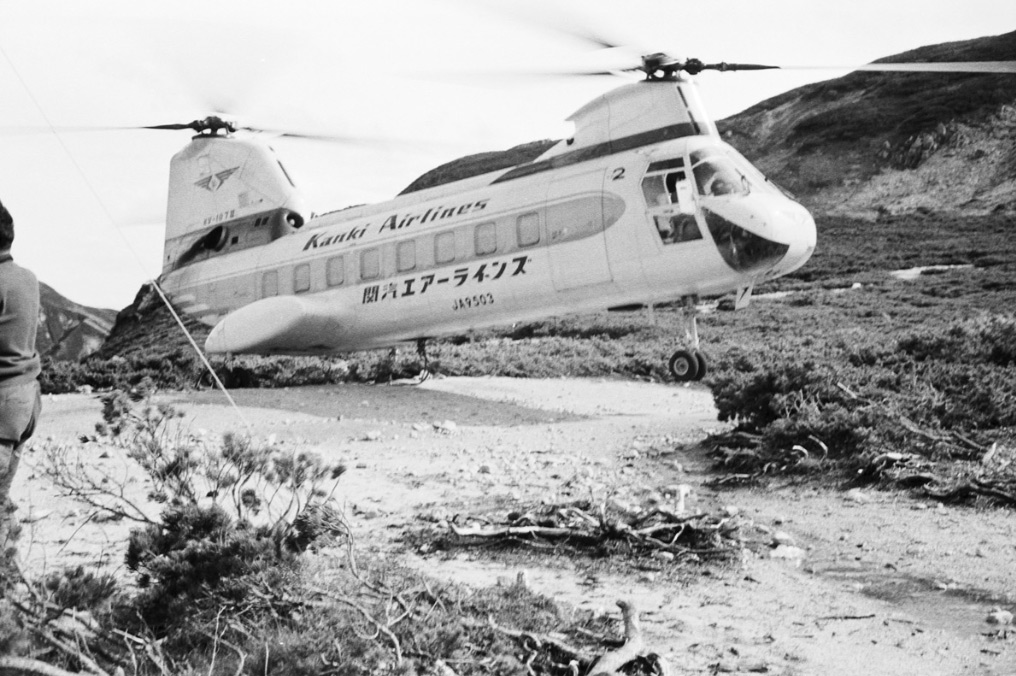
-
1963Winter climb on Mt. Yakushi-Dake by the Alpine Club of the Aichi University ends in disaster.
-
1964“Kurobe no Sanzoku Alps no Kai (Bandits of Kurobe: Mystery in Alps)” (Jitsugyo-no-Nihonsha), a book by Shoichi Ito was published.
The Mitsumata Clinic opened (during summer season).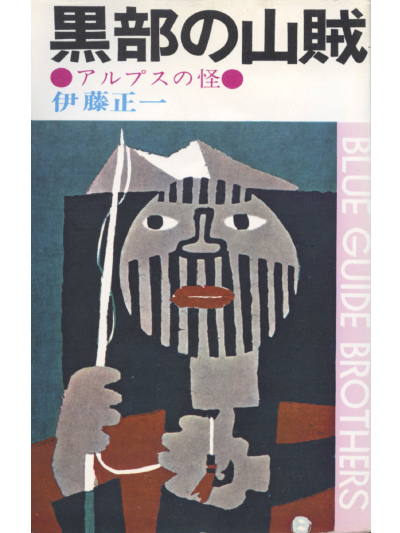
-
1964“Nihon Hyaku Meizan (One Hundred Mountains in Japan)” by Kyuya Fukada was published.
Completion of the Kurobe Dam -
1965The Suisho-Goya Hut was completed after the third attempt.
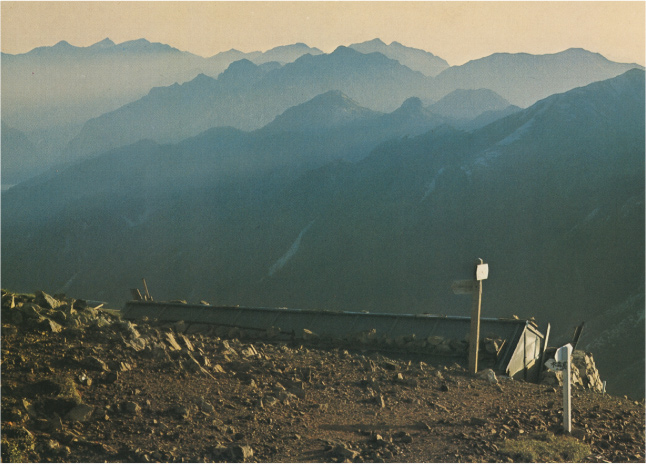
-
1965The Alpine Patrol Team of the Toyama Prefectural Police was organized.
-
1968
-
1969Torrential rainfall in August caused a great flood in vicinity of Kurobe River and various places.
In Takase River, the Kuzu Hot Springs was wiped away and in Kurobe River, the power facilities and cableways received extensive damage. -
1971Kyuuya Fukada passed away during climbing Mt. Kayagatake due to cerebral stroke.
-
1974
1974
Observation Restaurant in the Mitsumata-Sanso Hut was completed.
-
1976Introduction of Gore-Tex material for the tent construction.
-
1979Completion of the Takase Dam.
-
1983The Ito-Shindo Trail was no longer possible as regular trail due to lack of maintenance, a decrease in number of users caused by the construction work on the Takase Dam, and by multiple washouts in the steep terrain.
-
1986Reinhold Messner completed first-ever ascent of all 14 peaks over altitude of 8,000 meters.
-
1987Collection of land rent of the mountain huts by the Forestry Agency became the profit based system. In 1989, the Forestry Agency issued removal order of the mountain hut to Shoichi Ito, who protested this new system for its unconstitutionality. In 1991, this issue developed into court battle.
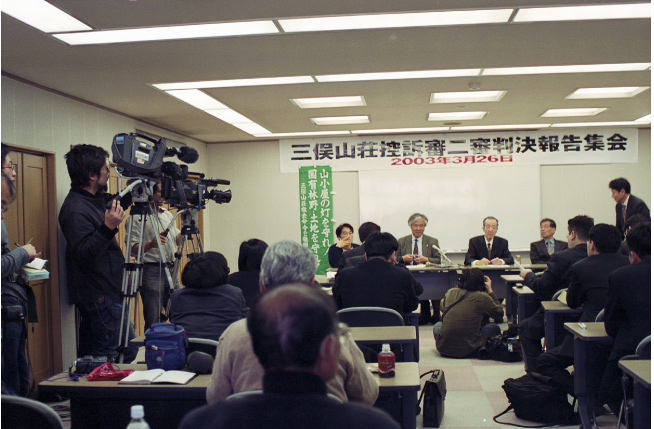
-
1990年代“One Hundred Mountains Boom” (The Second Mountaineering Boom) began.
-
1996
-
2003Shoichi Ito lost his case of “land rent litigation vs Forestry Agency” at Kanazawa Bureau of the High Court. Following year, final appeal of pertinent litigation was turned down by the Supreme Court and a 13 year court battle came to an end. Later, the Forestry Agency and Shoichi come to reach an out of court settlement.
-
2005The New Kama Tunnel was opened.
-
2007The Suisho-Goya Hut was rebuilt at the initiative of Kei Ito, the eldest son of Shoichi Ito.
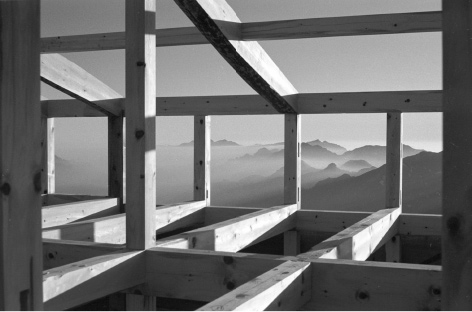
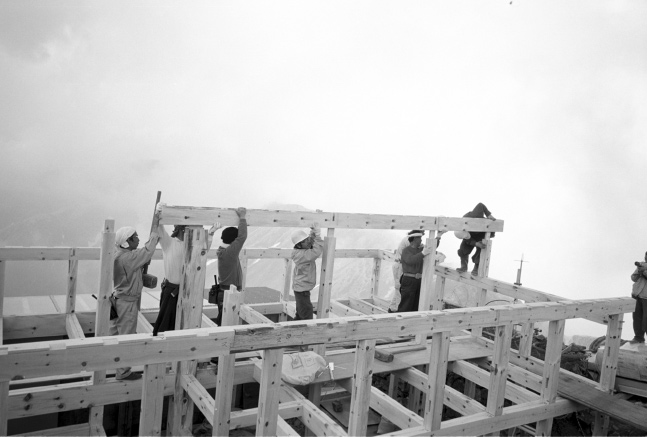
-
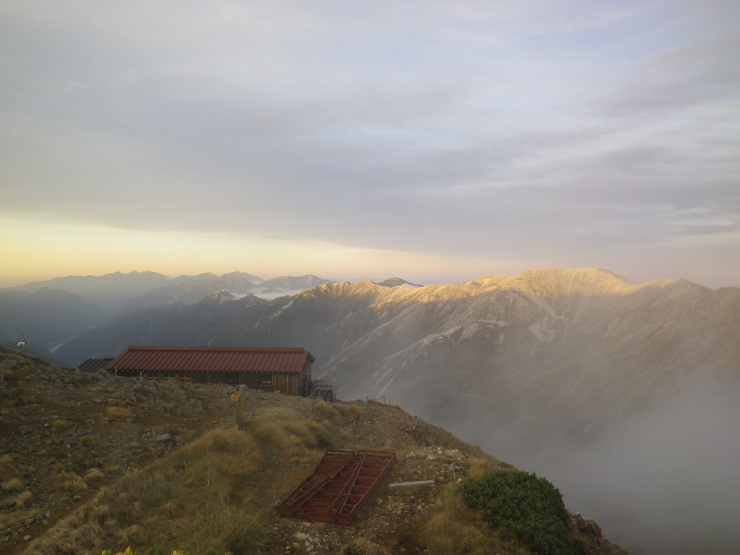
-
2008Revegetation Project of Kumonodaira begins in conjunction with the Kumonodaira Mountain Hut and the Tokyo University of Agriculture.
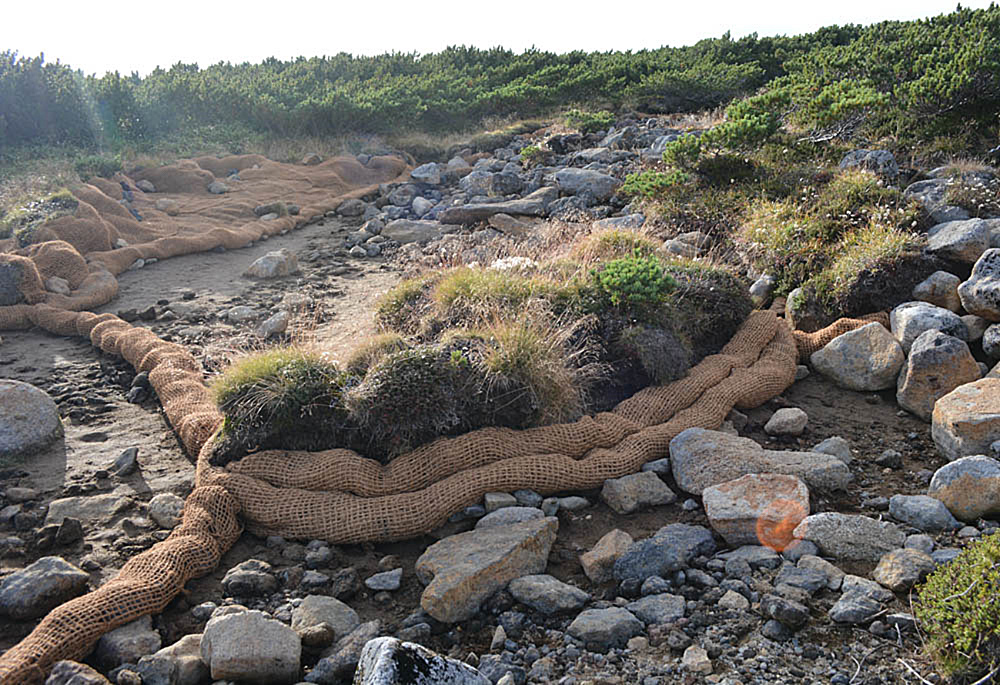
-
2009A large scale alpine accident occurred on Mt. Tomuraushi and Mt. Bieidake of Mt. Daisetsu Mountain Range in Hokkaido and 10 trekkers lost their lives from hypothermia.
2010
The Kumonodaira Mountain Hut was rebuilt
at the initiative of Jiro Ito, the second son of Shoichi Ito.
at the initiative of Jiro Ito, the second son of Shoichi Ito.
-
2011Shoichi Ito effectively retired from the business.
-
2014“Teihon Kurobe no Sanzoku (Authentic Edition Bandits of Kurobe)” (Yama-kei Publishers Co., Ltd.) by Shoichi Ito was published.
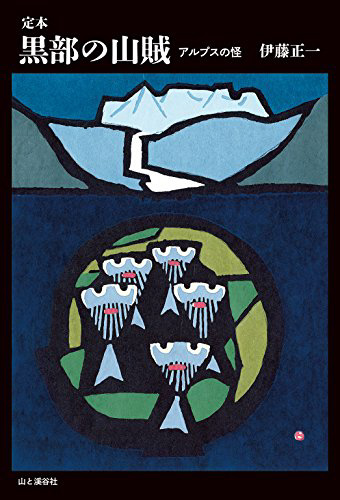
-
2014Mt. Ontake in Nagano Prefecture erupts and over 50 trekkers are dead or missing.
-
2015“Genryu no Kioku (Memory of Riverheads)” by Yama-kei Publishers Co., Ltd. was published.

-
2016Shoichi Ito passed away at age 93.
-
2018Kei Ito completed the Suisho-Goya Hut.

